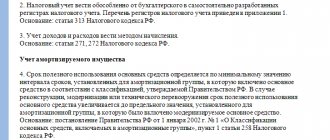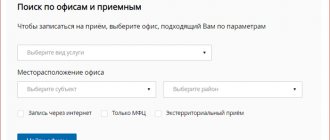Taxation systems in the Russian Federation
Any newly registered organizations or individual entrepreneurs apply the general taxation regime by default. It involves the payment of the main taxes in force in Russia, the list of which is given in Chapter. 2 part 1 of the Tax Code of the Russian Federation.
In addition to OSNO, a taxpayer has the right, upon application, to use special regimes that exempt from payment of a number of taxes established for OSNO, replacing them with another tax or a system of tax benefits. Today the following special regimes are in effect in the Russian Federation:
- Unified Agricultural Tax is a taxation system for agricultural producers (Chapter 26.1 of the Tax Code of the Russian Federation), is a basic taxation system (i.e., the enterprise as a whole, and not a separate type of activity, switches to it), it can be used by firms and individual entrepreneurs carrying out strictly defined activities in relation to a certain type of product;
- STS - simplified (Chapter 26.2 of the Tax Code of the Russian Federation), is also a basic system, it can be used by companies and individual entrepreneurs, regardless of the type of activity, but having limited amounts of income and meeting certain criteria in terms of number of personnel, book value of fixed assets, etc.;
- UTII is an imputation (Chapter 26.3 of the Tax Code of the Russian Federation), it can be used by companies and individual entrepreneurs in relation to strictly defined one or several types of activities;
- PSA is a taxation system for the implementation of a production sharing agreement (Chapter 26.4 of the Tax Code of the Russian Federation), used in relation to all activities by one legal entity or an association of legal entities when, within the framework of an agreement, the search and production of mineral raw materials in a subsoil plot that belongs to the state;
- PSN is a patent taxation system (Chapter 26.5 of the Tax Code of the Russian Federation), applied only to individual entrepreneurs in relation to strictly defined types of activities.
https://youtu.be/D6VWdQXteE8
Rules for combining UTII and simplified tax system
The right to apply UTII and simplified tax system simultaneously in the Tax Code is enshrined in paragraph 4 of Article 346.12. This provision of the law states that companies and entrepreneurs who have switched to UTII have the right to apply a simplified system for other types of business activities. However, the following conditions must be met:
- the number of employees of an organization or individual entrepreneur should not exceed 100 people;
- the residual value of fixed assets should be no more than 150 million rubles (all fixed assets of the taxpayer are meant, regardless of the line of business);
- income from “simplified” activities should not exceed 150 million rubles;
- operations carried out within the framework of the simplified tax system and UTII are accounted for separately.
Combining modes requires separate accounting. An individual entrepreneur on UTII and the simplified tax system simultaneously maintains only tax records - he is not required to maintain accounting records. Within the tax framework, it is necessary to ensure separate accounting of income, expenses, property, as well as employees engaged in “simplified” and “imputed” activities. Organizations, in addition, are required to maintain accounting records, and separate accounting can be organized using separate accounting accounts.
Free tax consultation
Income accounting
By default, entities are not required to count income from “imputed” activities on UTII. Their amount is not used either to calculate the tax or to determine the possibility of applying imputation. However, if you apply UTII and the simplified tax system simultaneously, you have to separate “imputed” income from those received from activities on the simplified system.
The separation methods can be as follows:
- funds according to the simplified tax system come to the account (sales to clients - legal entities and individual entrepreneurs), and according to UTII - to the cash desk (sales to retail customers);
- according to the details “taxation system” in the check - it is mandatory (if the cash register is used on both systems);
- for organizations - revenue under UTII and the simplified tax system is held in separate accounting accounts.
Costs when combining modes
Combining modes requires separate cost accounting, and this is not so easy to ensure. After all, only part of the costs is directly related to one or another activity. For example, in production on the simplified tax system, such expenses may include raw materials and materials. In wholesale trade, the cost of purchasing a batch of goods from the manufacturer.
But there are expenses that cannot be attributed only to one or another activity. For example, costs for management personnel, support services, maintenance of common premises and many others. Such expenses should be divided as follows:
- Determine total income.
- Using separate accounting data, determine what share of this income is received from activities on the simplified tax system, and what share is from imputed income.
- Divide the costs according to this proportion.
For example, 10 million rubles were earned during the period. Of these, 7 million (70%) came from wholesale trade on the simplified tax system, and 3 million (30%) from retail trade on UTII. The total expenses, which cannot be divided, amounted to 1 million rubles. This amount will be distributed between the simplified tax system and UTII in the proportion of 70% to 30%. That is, 700 thousand will be taken into account in expenses for the simplified tax system, and 300 thousand rubles in expenses for UTII.
Employees and their contributions
When combining the simplified tax system and UTII regimes, you need to take into account how many workers are employed in a particular activity. This is required to determine their costs, including insurance premiums. Contributions for employees who work under UTII are deducted from the tax, reducing it by a maximum of 50%. The same should be done with contributions from employees engaged in activities on a simplified system with the “Income” object.
Contributions for those persons who are engaged in activities on the simplified tax system. Income minus expenses are included in expenses and reduce the tax base. If an employee is employed on both UTII and the simplified tax system, his contributions are divided between the systems in proportion to income.
Let us explain the distribution of contributions using an example. Let 500 thousand rubles of insurance contributions be paid for workers who are directly employed in imputed and simplified activities. Let’s take the ratio of simplified taxation system/UTII income in the total amount of income from the example above: 70/30.
Thus, the share of simplified activities will account for 350 thousand rubles of insurance premiums, and the share of imputed activities will account for 150 thousand rubles. Due to the last amount, you can reduce UTII by up to half. As for contributions from employees engaged in simplified activities, they are dealt with as follows:
- if the simplified tax system is applied with the object “Income”, contributions are also deducted from the tax, reducing it up to 50%;
- if the simplified tax system is applied: Income minus expenses, then the amount of 350 thousand rubles is included in expenses.
Free accounting services from 1C
Individual entrepreneur contributions for himself
A similar situation when applying UTII and simplified tax system simultaneously arises with individual entrepreneurs’ contributions for themselves. In 2020, all entrepreneurs must pay 40,874 rubles + 1% of the amount over 300 thousand rubles. These deductions are distributed between UTII and the simplified tax system in the manner discussed above. Contributions that are paid within the year (fixed) can be deducted either from UTII or from tax under the simplified tax system - the choice is up to the entrepreneur. A deduction is made for the entire amount of contributions paid, and the tax is reduced down to zero. The deductions an individual entrepreneur pays from an income of more than 300 thousand rubles are reduced by both UTII and the simplified tax system. Income and the amount of deductions are calculated for each mode separately.
The question often arises: does an individual entrepreneur have the right to deduct his own contributions if he has employees in one activity, but not in another? There is a letter from the Ministry of Finance dated 08/02/2013 No. 03-11-11/31222 on this matter. For example, in simplified activities there are employees, but in imputation the individual entrepreneur does everything himself. In this case, according to the Ministry of Finance, it has the right to deduct insurance contributions from UTII.
Another typical situation: an individual entrepreneur was doing business alone, but subsequently hired an employee. In this case, he can use a deduction of up to 100% of the tax for the last time in the quarter that he worked completely independently.
So, it is possible to combine the simplified tax system and UTII. In many cases, this will provide good savings on mandatory payments. But for this it is necessary to organize separate accounting of transactions within the framework of imputed and simplified activities. However, it is also worth recalling that in 2020, individual entrepreneurs and organizations have the last chance to save on UTII. Starting next year, this tax regime will be abolished, and some regions began to abandon it already this year.
Is it possible to combine OSNO and simplified tax system according to the Tax Code of the Russian Federation?
The possibility of applying the simplified tax system does not depend on the type of activity carried out by the company or individual entrepreneur, but on the scale of the activity. Simplified taxation and OSNO are the basic taxation systems, which explains the impossibility of their simultaneous application. This position is supported by the Ministry of Finance in its letters dated 09/08/2015 No. 03-11-06/2/51596, dated 04/21/2011 No. 03-11-06/2/63.
The courts adhere to a similar position (rulings of the Constitutional Court of the Russian Federation dated October 16, 2007 No. 667-О-О, Supreme Arbitration Court of the Russian Federation dated October 4, 2011 No. VAS-13098/11 in case No. A06-6415/2010).
Read the recommendations for choosing a tax regime set out in the materials:
- “What is the difference between the simplified tax system and the OSNO? What is more profitable? ;
- “What are the possibilities for optimizing taxes under the simplified tax system?”.
Features of the simplified tax system and conditions for transition to it
The simplified taxation system (STS) is one of the special tax regimes.
Not all businessmen can switch to the simplified tax system. Art. 346.12 of the Tax Code of the Russian Federation contains a number of restrictions:
- Composition of founders (for legal entities). The share of other organizations in the company's capital should not exceed 25%.
- Legal status of an economic entity. Non-residents, as well as budgetary and government institutions, cannot work for the simplified tax system.
- Activities. Clause 3 art. 346.12 of the Tax Code of the Russian Federation includes a number of areas of activity for whose representatives the transition to simplified legislation is impossible. This is the financial sector, the production of excisable goods, the gambling business, etc.
- Business scale. Limit values are provided for a number of parameters:
- revenue - up to 112.5 million rubles. for 9 months of the year preceding the transition;
- number - up to 100 people;
- residual value of fixed assets - up to 150 million rubles.
- The structure of the company. The presence of branches also deprives a businessman of the right to switch to the simplified tax system.
For those who meet all the criteria, the simplified tax system allows you to replace VAT, income tax (or personal income tax for individual entrepreneurs) and property tax with one simplified tax.
Its rates are lower, and the calculation procedure is simpler than under OSNO (at least due to the fact that three taxes are replaced by one).
All other additional taxes under the simplified tax system are paid in the same way as OSNO, if there is a base for them. However, in this case, even theoretically it may not be for all payments.
For example, simplifiers cannot be engaged in the production of excisable goods, organizing a gambling business, or mining minerals. Therefore, by definition, they cannot be obligated to pay mandatory payments corresponding to these types of activities.
Combination of tax regimes for legal entities
Firms have the right to use OSNO, Unified Agricultural Tax, USN, UTII, PSA.
Only certain types of activities are transferred to UTII, so this system can be combined with all of the listed systems, except for the PSA, in which these types of activities are not carried out in principle.
Read about the features of combining simplified taxation system and UTII here.
PSA is generally not combined with any taxation system, since under this regime the organization’s activities are completely preferential.
Also, the activities of a company under the Unified Agricultural Tax are completely transferred to a special regime, however, it is permissible to use UTII for certain types of activities.
Possible combinations of tax regimes for firms are shown in Table 1.
Table 1
| Mode | BASIC | Unified agricultural tax | simplified tax system | UTII | PSA |
| BASIC | X | — | — | + | — |
| Unified agricultural tax | — | X | — | + | — |
| simplified tax system | — | — | X | + | — |
| UTII | + | + | + | X | — |
| PSA | — | — | — | — | X |
On the joint use of UTII and simplified tax system
So, the list of “imputed” types of activities is limited.
And if, along with this line of business, a company or entrepreneur carries out others, it is necessary to combine the simplified tax system and UTII. A typical example: activities for the production of any product are carried out on the simplified tax system, and its retail sale through your own store is carried out on UTII. Another case of combination: an online store on the simplified tax system plus a “real” outlet on imputation. In connection with recent changes in legislation, a new situation has arisen when it is worth thinking about combining regimes. In 2020, a new restriction was introduced for individual entrepreneurs and companies - it was prohibited to sell shoes, fur clothing and its elements, as well as medicines on UTII. These product groups are subject to mandatory labeling by means of identification. Therefore, the question arose: is it possible to sell such goods on the simplified tax system, and all others - on UTII?
When analyzing the legislation on the market, it was believed that entities involved in the sale of these products would be completely prohibited from using UTII. So is it possible to combine the simplified tax system and UTII when selling shoes and other goods in 2020? The Ministry of Finance issued a letter dated November 13, 2019 No. 03-11-11/87500, in which it came to the following conclusion: it is still possible to trade unmarked goods on UTII and parallel marked goods on the simplified tax system.
Combination of tax regimes for individual entrepreneurs
The possibilities of individual entrepreneurs in terms of combining taxation regimes are significantly wider than those of companies, due to the PSN, which can be used in conjunction with any other system used by the individual entrepreneur, since, as with UTII, certain types of activities are transferred to PSN.
Look at examples of combining the patent and simplified taxation systems in the material “Is it possible to combine the simplified tax system and the PSN (examples)?”
Possible combinations of taxation regimes for individual entrepreneurs are shown in Table 2.
table 2
| Mode | BASIC | Unified agricultural tax | simplified tax system | UTII | PSN |
| BASIC | X | — | — | + | + |
| Unified agricultural tax | — | X | — | + | + |
| simplified tax system | — | — | X | + | + |
| UTII | + | + | + | X | + |
| PSN | + | + | + | + | X |
When the question arises about combining simplified taxation system and OSNO
Why does the question arise about combining the simplified taxation system and the OSNO, if the simplified taxation system is clearly more profitable and convenient?
One of the main reasons is related to VAT, or rather its absence during simplification. After all, if a supplier sells goods or provides services without VAT, then his counterparty cannot reimburse this tax.
Therefore, large buyers working for OSNO may prefer the simplified one to its competitor, who issues documents with VAT included.
In addition, under the simplified tax system, tax is paid even in the case of unprofitable activities. This mode can be used in two versions - with “income” and “income minus expenses” objects.
In the first case, everything is clear: here the base is all revenue, regardless of the amount of costs. But even when using the second object, the minimum tax will have to be paid in any case. It is provided for in paragraph 6 of Art. 346.18 of the Tax Code of the Russian Federation and amounts to 1% of revenue.
Therefore, in some cases it is more profitable to leave part of the business on OSNO. These may be types of activities with low profitability or those areas of work that are primarily focused on buyers - VAT payers.
This is important to know: What taxes does an individual entrepreneur pay on a patent in 2020 without employees?
Whether this can be done from a legal point of view will be discussed in the following sections.
Results
The combination of OSNO and simplified tax system is unacceptable. These tax systems are alternatives to each other. This position has been confirmed more than once by the Ministry of Finance and judicial practice. For certain types of activities, it is permissible to use imputation or the patent system (if we are talking about individual entrepreneurs), combining these regimes with the simplified tax system or OSNO.
Sources: Tax Code of the Russian Federation
You can find more complete information on the topic in ConsultantPlus. Full and free access to the system for 2 days.
General system
The general taxation system will be “set” for all beginning entrepreneurs who, through forgetfulness or ignorance, do not indicate exactly how they want to pay taxes.
profit tax is for organizations - 20% on the difference between income and expenses, and for private entrepreneurs - income tax at a rate of 13%:
it is necessary to pay property tax, if any;
OSNO can be either profitable or unprofitable, and this often depends on VAT. Having to pay this tax every quarter requires keeping all documentation in order, especially invoices, which can reduce your tax base.
OSNO is an ideal option for those who are engaged in wholesale trade or cooperate with large companies.
What is OSNO
Before we talk about combination, let’s understand the concepts of tax regimes in principle.
The general tax system (OSNO) is the basic option for any enterprise or individual entrepreneur (IP). If a businessman, after registration, has not expressed a desire to switch to another mode, then by default he is considered to be working on OSNO.
The basic tax regime always includes the following set of mandatory payments:
- Income tax (for legal entities).
- Personal income tax (for individual entrepreneurs).
- Value added tax.
Also, within the framework of OSNO, businessmen can pay other taxes. But according to them, not all economic entities are recognized as taxpayers, but only those that have appropriate objects of taxation. The most common of these mandatory payments are:
- Property tax - if there are taxable objects.
- Transport tax if there are registered vehicles.
- Land tax. It is paid by owners and users of land plots.
Other taxes (for example, excise taxes, mineral extraction tax or gambling tax) are much less common. They are paid only by businessmen who are engaged in the relevant activities.
Simplified system
The simplified system is one of the most popular today. You only need to pay one tax, make transfers once a quarter, and fill out a tax return once a year. The tax rate is either 6% or 5%-15%. The object of taxation (only income or the difference between income and expenses) can be selected.
A simplified system often becomes more profitable, but in order to switch to the simplified tax system, certain conditions must be met: few employees, small income, etc.
Is it possible to combine the simplified tax system and UTII when trading marked and unmarked goods?
This is the next pressing question that worries traders. Several letters were issued in response. This is the already mentioned letter of the Federal Tax Service dated January 21, 2020 No. SD-4-3/726, as well as letters of the Ministry of Finance dated November 13, 2019 No. 03-11-11/87500, dated January 15, 2020 No. 03-11-11/1265.
They indicate that it is permissible to combine activities for the sale of goods, which is retail trade, which is subject to UTII, and activities for the sale of goods, not related to retail trade, which is taxed under the simplified tax system.







